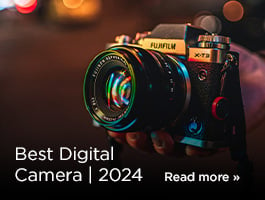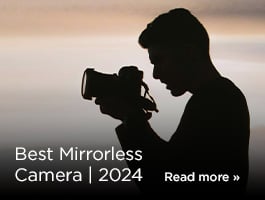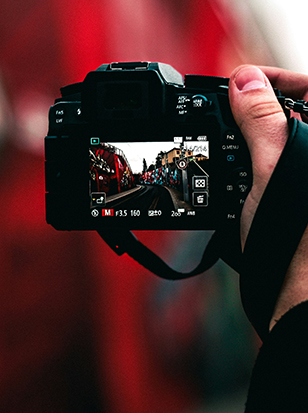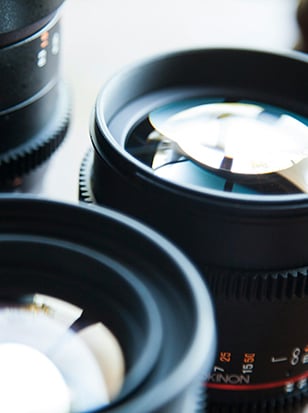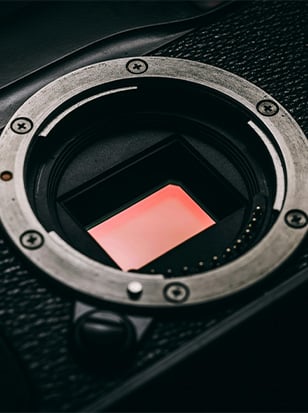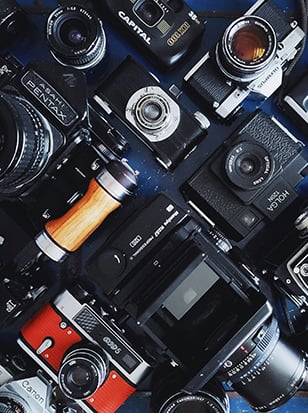
The GFX100RF is one of the year's most exciting releases. It’s a camera that continues Fujifilm's drive to create exceptional medium-format cameras for those who also appreciate beautiful aesthetics. With a design nod to Fujifilm's fixed lens film rangefinders of the ’90s, how does this digital equivalent fare?
How about a trip to Tunisia to find out? Watch our review below!
So, first up — the GFX100RF is not a rangefinder — I repeat, it’s not a rangefinder.
While it shares many design similarities to the X100VI, which is closer to a rangefinder as you can view through the glass, the GFX100RF does away with that feature. You can only monitor it via the electronic viewfinder or the rear LCD panel. What do we call it then? Well, the most accurate way to describe it is a Fujifilm medium-format fixed-lens mirrorless camera.
In this article, Ian (the one in the video up there) is going to take a look at the top-line specs and give his expert take. He’d stress that opinions are subjective and he recognises that his preferences are his own. He’ll cover resolution, crop modes, the fixed lens and its aspect ratio dial, but first up, handling and design.
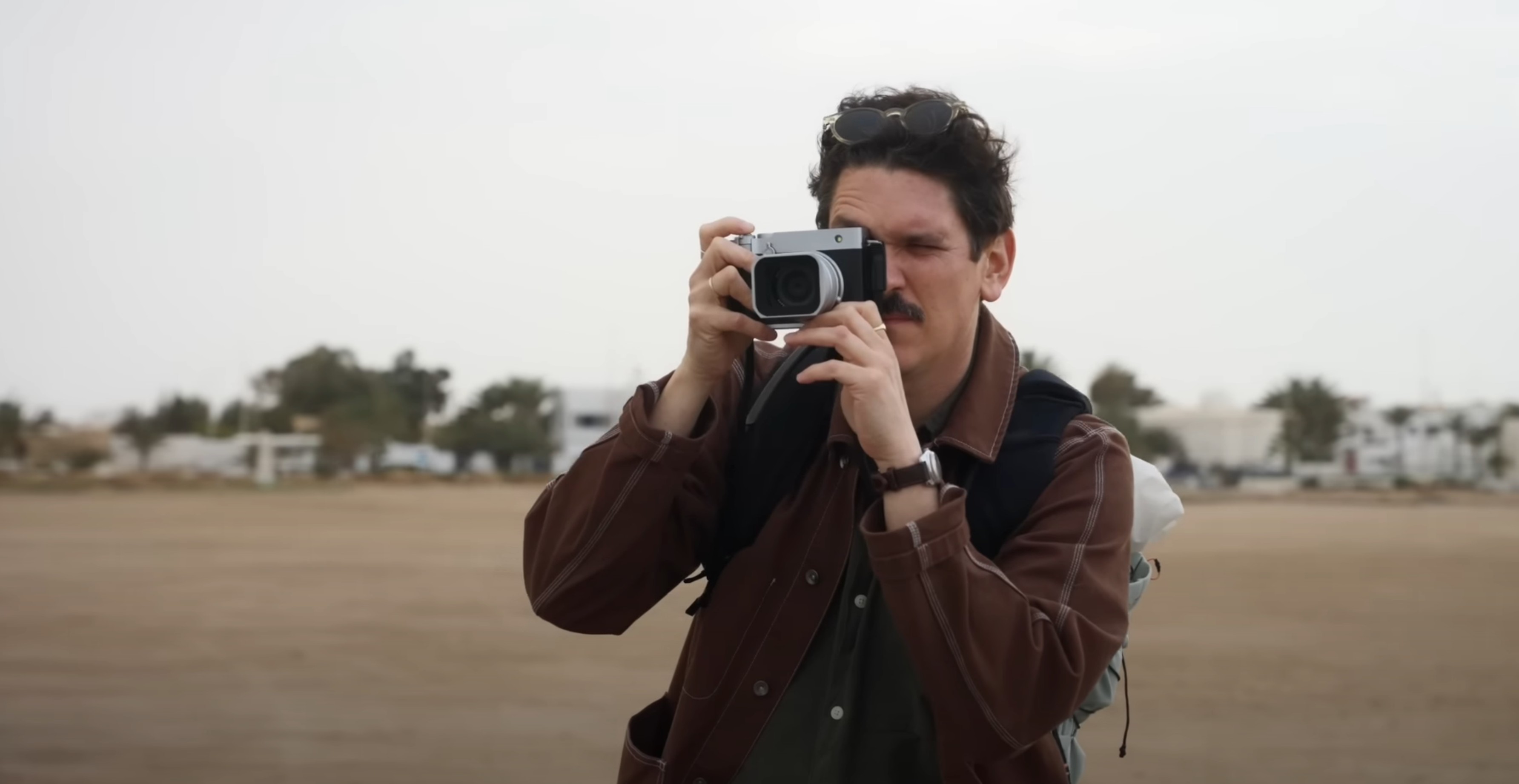
Handling and Design
- A beautiful design
- Comfortable and well-balanced
- A premium feel with its machined aluminium top and bottom plate.
- With an adapter and filter, the camera can be classed as weather-resistant.
- The menu system is classic Fujifilm. Everything is neatly arranged and easy to access.
- It has a thick control wheel on the front of the camera, which is fully programmable.
- A new “crop zoom lever" lets you crop images on the fly.
- New aspect ratio dial at rear top of camera lets you select aspect ratio (will still save full sensor readout for RAW)
- There’s an ISO dial within the shooting mode dial. It’s a borrowed, but welcome, design from elsewhere in Fuji’s range
- The included rope-style shoulder strap is very comfortable and looks great.
The camera handles beautifully. Not only does it feel and look amazing, but everything simply works and handles very efficiently and easily. All its dial and control placements work intuitively, both the new ones and the tried and tested ones.
The grip isn’t particularly deep, but it’s very comfortable and well-balanced, meaning it feels secure in your hands. As you’d expect, it has a premium feel, which is thanks to the machined aluminium top and bottom plate. It has beautifully knurled and grippy dials everywhere, and satisfyingly clicky clicks and stops.
I am usually a function over form kinda guy, but somehow — and it is rare — Fuji have seamlessly combined both. Its photographic power, packaged in a lightweight and small body, makes this camera a joy to use.
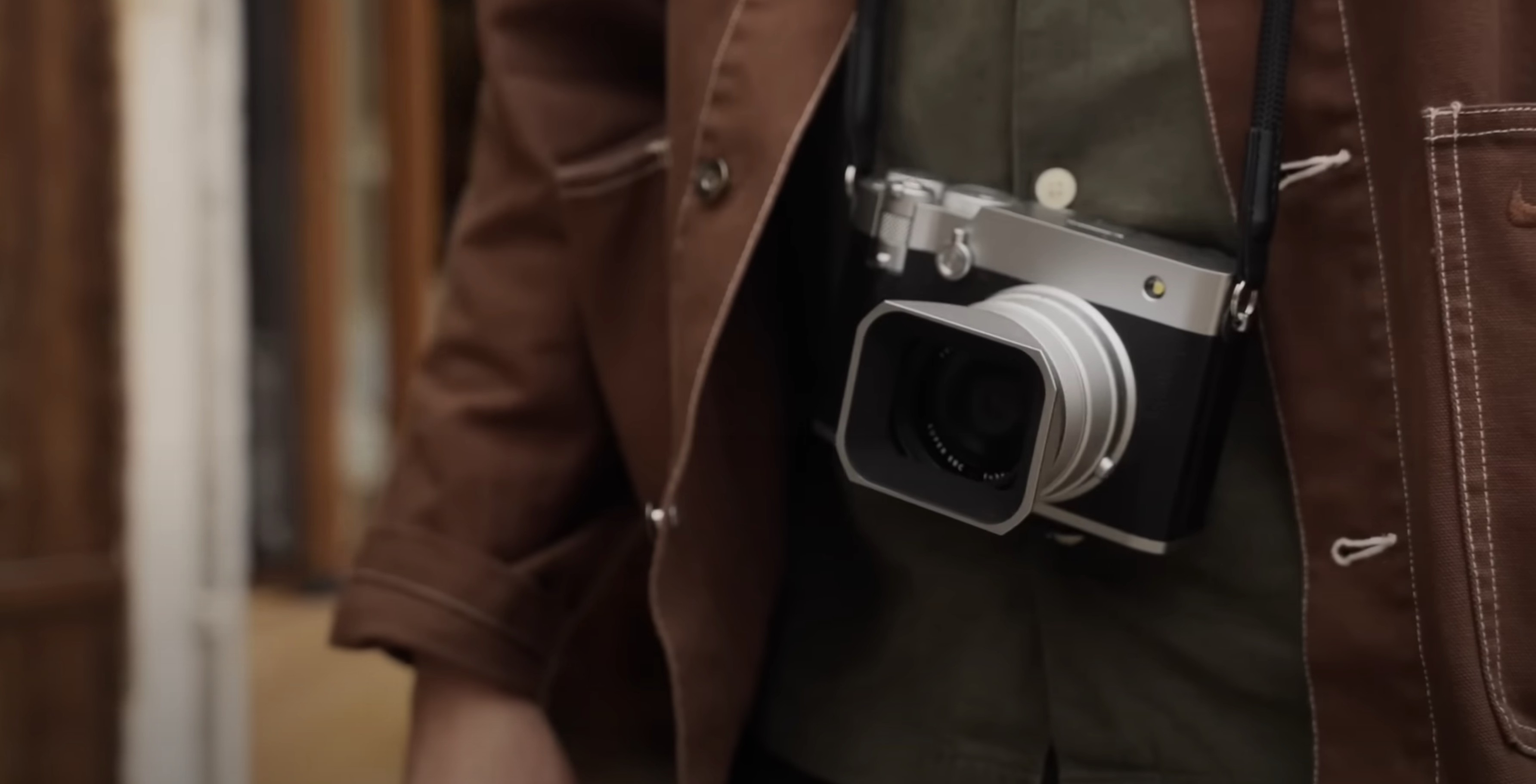
Sensor, resolution, and processor
- 102 MP BSI CMOS II Medium Format sensor
- 44x33mm sensor size
- X-Processor 5 processor
Combining the 102MP sensor with the 35mm f4 makes perfect sense, offering a 28mm full-frame equivalent field of view in medium format, with significantly less distortion than you’d get on smaller formats. And of course, you can digital zoom but also use the dedicated crop function whilst retaining a ridiculous amount of resolution. It’s a perfect marriage between the tech and the intentions behind the overall package.
The X-Processor is the heart of the camera, making everything a bit quicker than GFX’s of old, where the data of the medium format sensor could make things a bit laggy. Not here, though. Aside from the enormous sensor, this camera handles like any other.

Shot at ISO 1600, f4, 1/20 sec
The 35mm f4 fixed lens
- 35mm f4 fixed lens (which equals a 28mm field of view in 35mm full frame terms)
- It has a leaf shutter allowing for flash sync at all super fast speeds, not just 1/125th
Whilst many would have wanted either a faster aperture and/or a slightly longer lens (maybe a 35mm equivalent with a f2.8 aperture), my take is that this lens is perfect.
Not only does it save on weight, but it also makes the lens protrude less, which aids the overall design of the camera. Combine this form with exceptional modern ISO performance that allows you to ride the ISO wheel to your heart's content, then f4 doesn’t sound that bad. Not to mention, at 28mm equivalent, which is pretty wide, how much defocus background and bokeh do you want or expect to get with an extra stop in aperture?
The lens is as fantastic as all modern Fujifilm optics. It’s so sharp and all aperture that you might even want to use a softening filter to chill it down — it's that good.
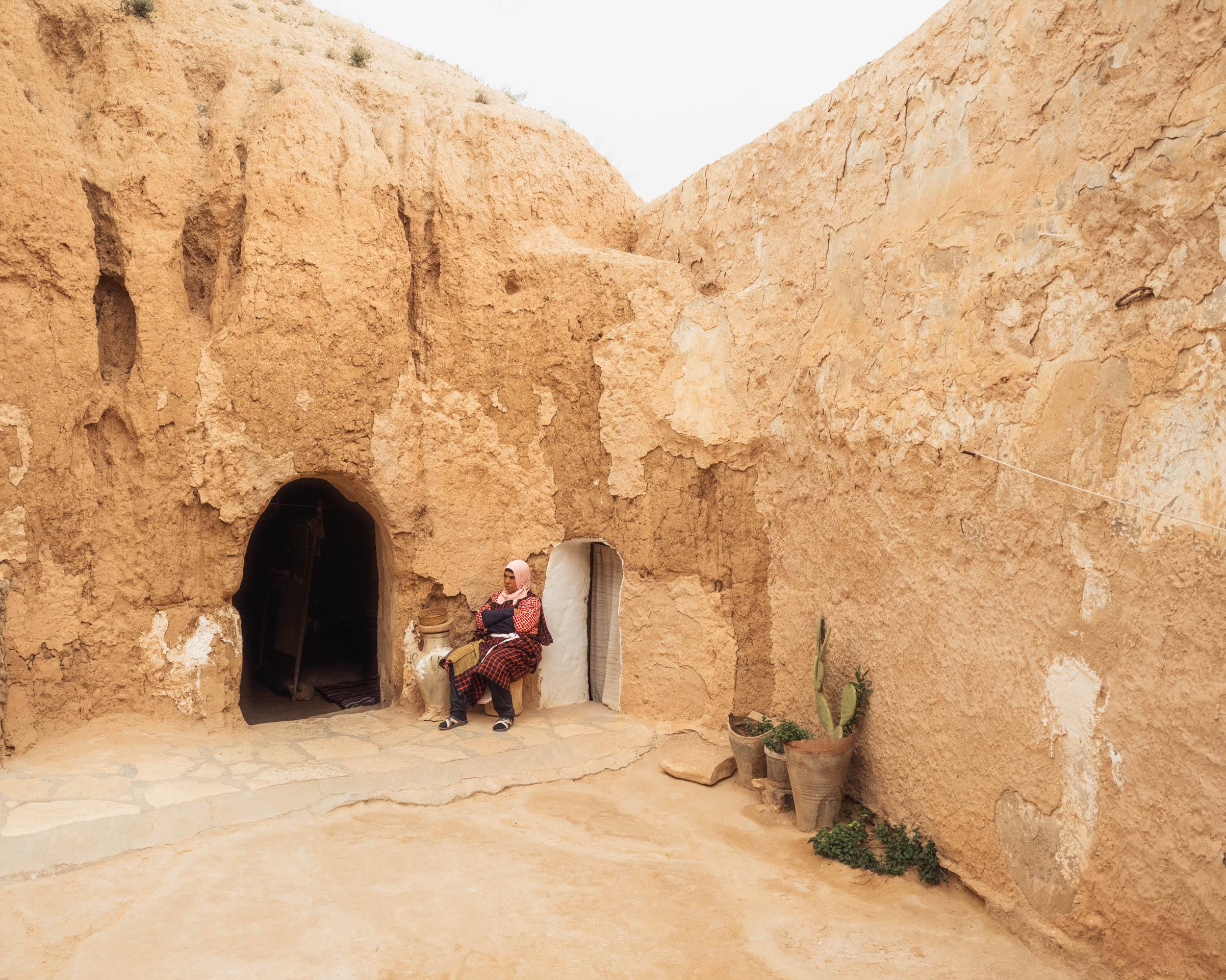
Shot at ISO 1250, f4, 1/1800 sec
Autofocus
- Deep learning AI with improved subject detection
- 117 focus points arranged in a 9x13 grid or 425 points arranged in a 17x25 grid
- Multi-purpose subject tracking or a specific subject detection
Traditionally, AF on GFX cameras (other than the GFX 100 II and GFX100S II) has been relatively basic. But the AF on the GFX100RF is a revelation. Sure, we’re not talking about pro cameras designed for fast-paced sports or wildlife, but that’s not what the GFX100RF is for. This camera’s primary goal is image quality.
In comparison to other GFX cameras, the AF is greatly improved, and the camera does a fantastic job, rather than simply relying on a single movable point AF.
And of course, there’s the intelligent AI subject detection and relative ease of nailing focus due to the focal length, which will capture most things in acceptable focus. There’s one of those subjective opinions we mentioned earlier.

Shot at ISO 320, f16, 1/8 sec
Stablisation
There is no IBIS.Other than the lens choice, the lack of IBIS is one of the most controversial aspects of the GFX100RF, and for obvious reasons.
IBIS has become a standard across most high-value mirrorless cameras over the past few years, with many claiming 6-8 stops of compensation. However, in my experience, IBIS is not to be relied on. Its true function is to be useful when times get desperate or when you get caught out. It’s often a crutch for those who want cleaner shots running smaller apertures to get more in focus (sports and wildlife photographers, etc). The argument that nothing will replace the tripod is true in many ways — certainly for those going out with specific intentions of shooting at night or when light is at a premium.
The GFX100RF is an entirely different beast. Not only is the wide lens more forgiving for running longer exposure times, but the ability for the sensor to ‘hide’ digital noise is excellent. I’ve shot older GFX cameras at 3200 and 6400 with noise, but here it was either pleasing and added texture or simply wasn’t visible for web display. Combined with the fact that IBIS may have added complications and expense to an already pricey system, I can almost understand its omission.
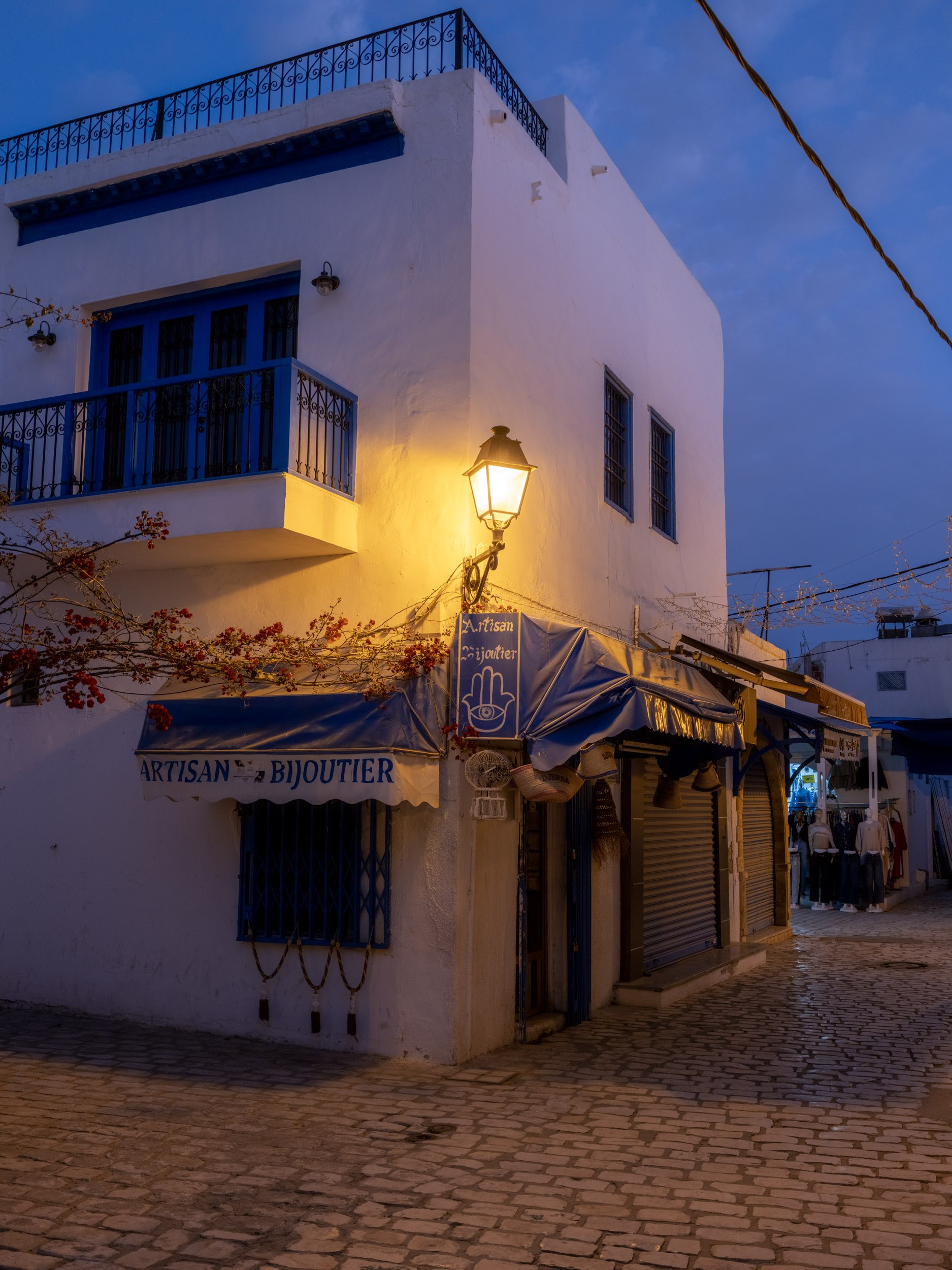
Shot at ISO 320, f4, 1/15 sec
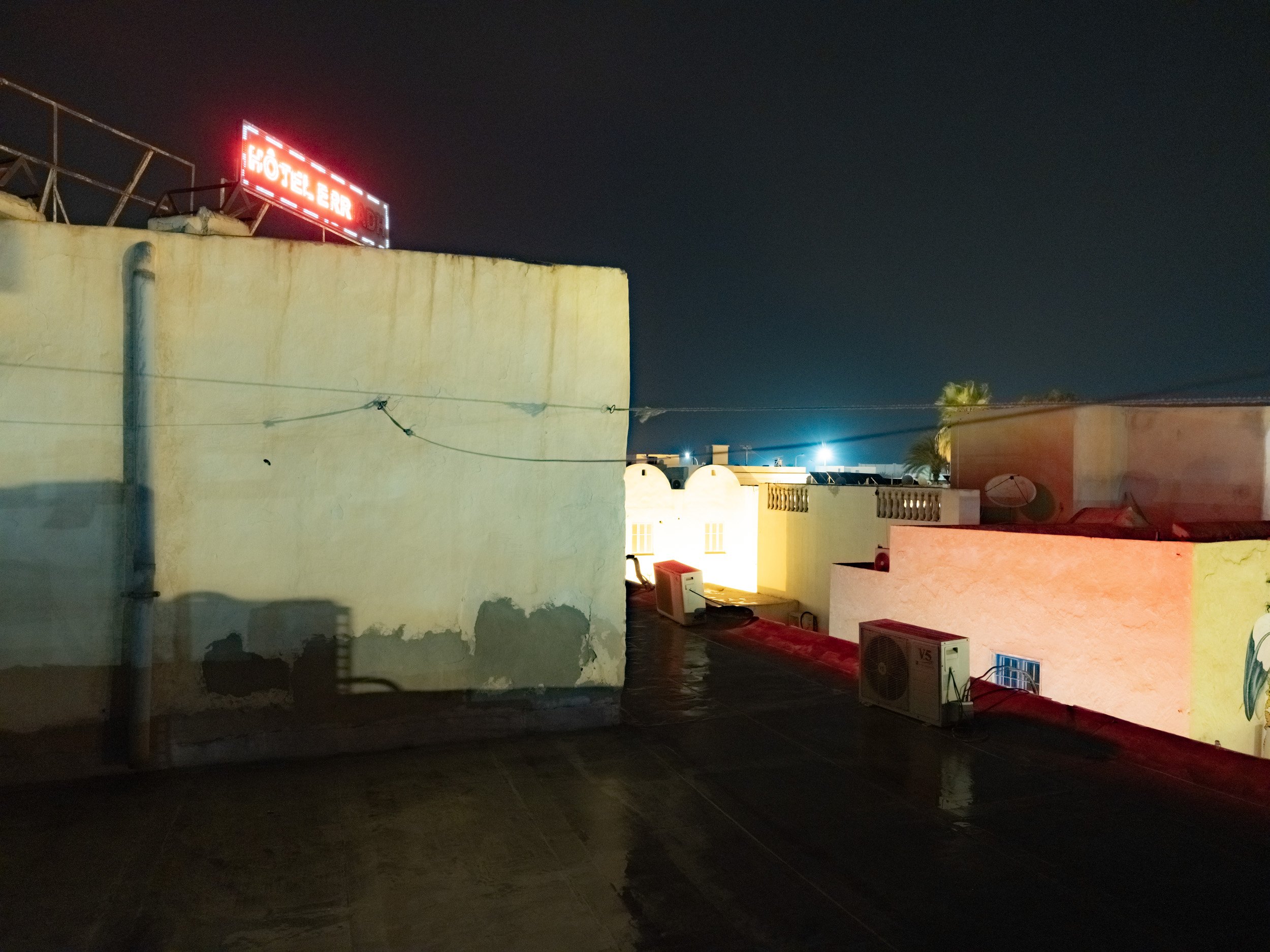
Shot at ISO 8000, f5.6, 1/4 sec
Image quality and Video
- 16-bit colour depth
- 14 stops of dynamic range
- 102 MP Medium format sensor
Okay, here we are. Arguably, this is what the GFX100RF is all about. Long story short — it doesn’t disappoint. Gorgeous colour, bags and bags of information and data from that huge sensor, allowing you to have maximum control over your images.
It's easy to forget to talk about the lens and how much input they have towards image quality, but the 35mm f4 is really doing a lot in helping render those files and do the sensor justice. As mentioned before, between the incredible ISO performance, sensor size, dynamic range, lens and colour depth, you’ll find it hard to be disappointed by the quality of your RAW images!
We’d be remiss to omit video, and the GFX100RF does have some legs here. Due to the complexities of video and the fact that it comes with a fixed lens, you might think it's heavily compromised. But Fuji have given it some decent specs, which is a boon for those creatives who may feel the demands of hybrid shooting.
- DCI4K/30P, 1080/60P / 4:2:2 10-bit / ProRes via Ext. SSD (USB-C)
- F-Log / F-Log2 / HLG / 802.11ac WiFi with Frame.lO connectivity
- 3.5mm Mic / Headphone / USB-C PD / Micro HDMI / UVC Webcam 4K/30P

Shot at ISO 125, f4, 1/950 sec
Shooting experience
I mentioned that image quality is arguably what the RF is all about, and that's because it may be trumped by the shooting experience. It is just so easy to enjoy shooting with this camera, which is no doubt thanks to the care and attention Fujifilm has put into the design to ensure that your experience is as enjoyable as seeing the images it takes.
We live in a digital age where we’re spoiled by RAW files and the endless editing possibilities they offer. But to truly enjoy the shooting experience, we can’t simply rely on the edit. And it seems to me that Fujifilm gets this.
Among various features, they’ve added a range of their classic film simulation modes and nine selectable aspect ratios, all of which can be easily accessed and controlled. There’s even a “Surround View” function when cropping that’ll show the cropped-out sections of your frame as translucent, so you’ll never miss what’s happening outside of the frame.

Shot at ISO 640, f4, 1/25 sec
I'm not going to lie, I was excited about this camera. And, it wasn’t just because it pays homage to much-loved cameras from Fujifilm’s celebrated film past, but because, quite frankly, it's a fixed-lens medium-format Fuji with 102 megapixels!
But with this excitement came trepidation; not being able to choose lenses, the cost, and the lack of IBIS — You get the picture. But in practice, what this camera does is it simplifies photography while offering incredible image quality.
It allows you to ‘see’ slightly differently. It might not be a smooth learning curve for some, but once you adopt the system and you begin to understand it, you’ll start to see the world at that focal length. The fact that it has those crop modes makes it so flexible. And just everything else they've done, including button layout and the dedicated aspect ratio dial, just makes it such a joy to use.
Lastly, who do I think this camera is for? In terms of format factor and weight, it’s definitely a camera for travel photography, documentary photography, and reportage. But of course, this is all subjective. But I can confidently say that what it can do, it does extremely well.
I will be enquiring with Fujifilm about an extended loan.
Fujifilm: Loan denied. Give it back.
Fujifilm GFX100RF Medium Format Camera - Silver
The Fujifilm GFX100RF combines high-resolution imaging with a compact, fixed-lens design, taking inspiration from Fujifilm's fan-favourite, the X100VI. Featuring the GFX series’ 102MP GFX CMOS II sensor and X-Processor 5, it offers a wide dynamic range, precision autofocusing, and 4K 30P 10-bit recording. Its 35mm f4 fixed lens, digital teleconverter with three focal lengths, and aspect ratio dial bring a new level of multiformat flexibility to medium-format photography.
£4,699.00 View
Sign up for our newsletter today!
- Subscribe for exclusive discounts and special offers
- Receive our monthly content roundups
- Get the latest news and know-how from our experts









